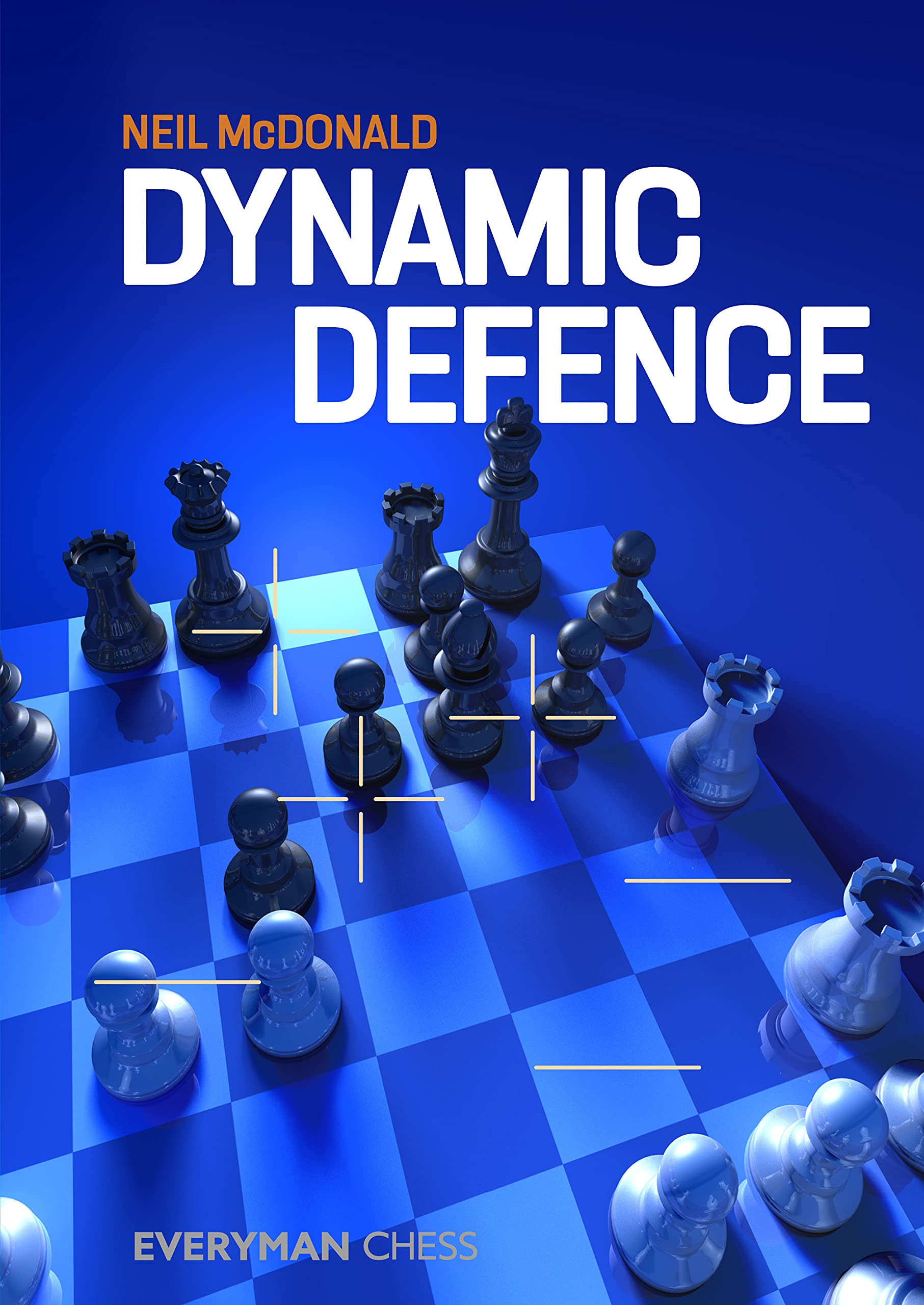
Here is the publishers blurb from the rear cover :
“Every chessplayer, from beginner to world champion, loves to win a game with a brilliant attacking display. However many, if not most, attacks that end in victory do so due to inaccurate defence. This may be due to simple tactical miscalculation or perhaps a more fundamental misunderstanding of the important principles of defence. Furthermore, many attacks that are launched are simply unsound but succeed because many players feel uncomfortable when forced to defend, get flustered and make mistakes.
In this book, highly experienced chess author and coach, Neil McDonald addresses these issues. Defensive skill is crucial in chess. Good, accurate defence can win a game just as well as a fine attacking display can, so expertise in this department is essential for any player wishing to improve their game. With thorough explanations, questions, and exercises, this book provides fascinating material to enable you to hone your defensive skill and not feel intimidated when your opponent hurls pieces at your king.”
About the author :
Neil McDonald is an English GM, an active player, a FIDE Trainer and a coach to the England junior teams. Neil has authored thirty-seven books for The Chess Press, Batsford and, most recently, Everyman Chess. One of his most recent works, The King’s Indian Attack : Move by Move, impressed considerably.

We have reviewed titles from Neil such as Coach Yourself: A Complete Guide to Self Improvement at Chess and Your Chess Battle Plan.
As with every recent Everyman Chess publication high quality paper is used and the printing is clear. Each diagram is clear as is the instructional text. Figurine algebraic notation is used throughout. The usual and reliable formatting from Brighton-based typesetter IM Byron Jacobs is employed.
The diagrams do not have a “to move” indicator or any kind of caption so you will need to work out for yourself how they relate to the text that they are embedded in. However, this is fairly obvious.
Everyman Chess (formerly known as Cadogan Chess) is a major publisher of Chess books. Other reviews on this site have covered the production quality and typesetting so i am not going to repeat that here. Figurine algerbraic notation is used throughout although the book is laid out in a single column format, a departure from the double column format normally used for chess books. Like other Everyman books the diagrams do not have a “to move” indicator or caption but it is easy to work out which player is to move when going through the games. The book does contain an Index of Openings and an Index of Games at the end of the book. Virtually all the games featured in this book are recent having been played in the 21st Century. Virtually all of the games included in the book were played by strong Grandmasters with several games featuring the worlds leading players. Magnus Carlsen features in 6 of the games in the book and Anand, Aronian Caruana, Giri & Mamedyarov , are also well represented here. One notable omission is that there are no games featuring Sergi Karjakin who is considered to be one of the best defensive players in the world.
The Chapters are as follows:
1 The Power of Centralisation
2 Keeping Out the Queen and Rooks
3 Knight versus Bishop: Caution or Counterattack
4 Resisting Raking Bishops
5 Challenging a Mighty Knight
6 Opposing an Advanced Pawn
7 Using the King as Bait
8 Fighting to Survive in a Bad Endgame
The subject of defence is neglected in chess literature, there are many books filled with best games and how to attack but very few that are devoted to the topic of defence. Everyone loves to attack when they are playing chess and don’t like having to defend. The book contains 60 games all of which are analysed in depth with some games spanning 7/8 pages. The analysis mainly consists of detailed explanations by the author supported by analysis. This is not book containing lots of detailed computer analysis trying to show that there are defensive resources available to players that they would not ever find over the board. At critical points in the games the author poses questions to the reader. Each game featured in this book is a battle between elite players and offer an insight in the dynamic nature of attack and defence.
The great defensive players of the past allexcelled in holding inferior positions and then slowly outplaying their opponents. Anatoly Karpov at his best is a prime example of this, often going on to outplay and eventually beat his opponent from inferior positions. Today the game has evolved so has defensive technique and players are a lot more enterprising in how they go about defending positions. Defenders now will look at how they coordinate their pieces, cover focal squares, overprotect, and generate counterplay rather than playing passively. In this book the author takes this even further and puts forward the concept of dynamic defence as a method of stealing the initiative from the attacking player. It is still necessary to defend well by playing patiently and being aware of the tactical resources available to your opponent. The author assumes that players are familiar with the principles of static defence and are looking to improve their defensive technique.
Here is a summary of the key principles from three chapters in the book.
1 The Power of Centralisation: Triumph of centralisation against a wing attack. Good centralisation can compensate for structural weakness or a lack of defenders around the king . But if the situation in the centre is bad and the kingside is weakened in some way then the defender is in big trouble
3 Knight versus Bishop: Caution or Counterattack: When facing an attack a crucial decision in whether to play according to the dictates of dynamic defence – that is – to try an seize the initiative – or to quietly strengthen the defensive line.
7 Using the King as Bait: An extreme method of provocation whereby a player will leave his king in the centre of the board and invite his opponent to attack trusting in his skills as a defender or where a player will try and goad his opponent into sacrifice material to expose their king. In doing so you are creating complications and trying to make your opponent overpress.
It is possible just to play through and enjoy the games in this book but in doing so you would miss out on many valuable lessons from an expert coach. I think that it is much harder to defend than it is to attack. if you have the initiative you can often have any good options at your disposal and can choose which one to analyze in depth. However as a defender you do not have the luxury of that option. Often you have to analyse and assess all the options available to your opponent which takes up considerable more time and often have to play precisely and find the ‘only’ move to keep you in the game.
The concepts put forward in this book are difficult and not immediately obvious to understand. This is a book that deserves close study and will ultimately earn you a lot of points, as you will be developing the skills to save inferior and even lost positions. Also, as you gain in confidence you will be more willing to take risks knowing that you have ‘dynamic defence’ to fall back on.
Tony Williams, Newport, Isle of Wight, 20th June 2022

Book Details :
- Paperback : 348 pages
- Publisher:Everyman Chess (1 Dec. 2021)
- Language: English
- ISBN-10:178194590X
- ISBN-13:978-1781945902
- Product Dimensions: 17.3 x 1.7 x 23.8 cm
Official web site of Everyman Chess

